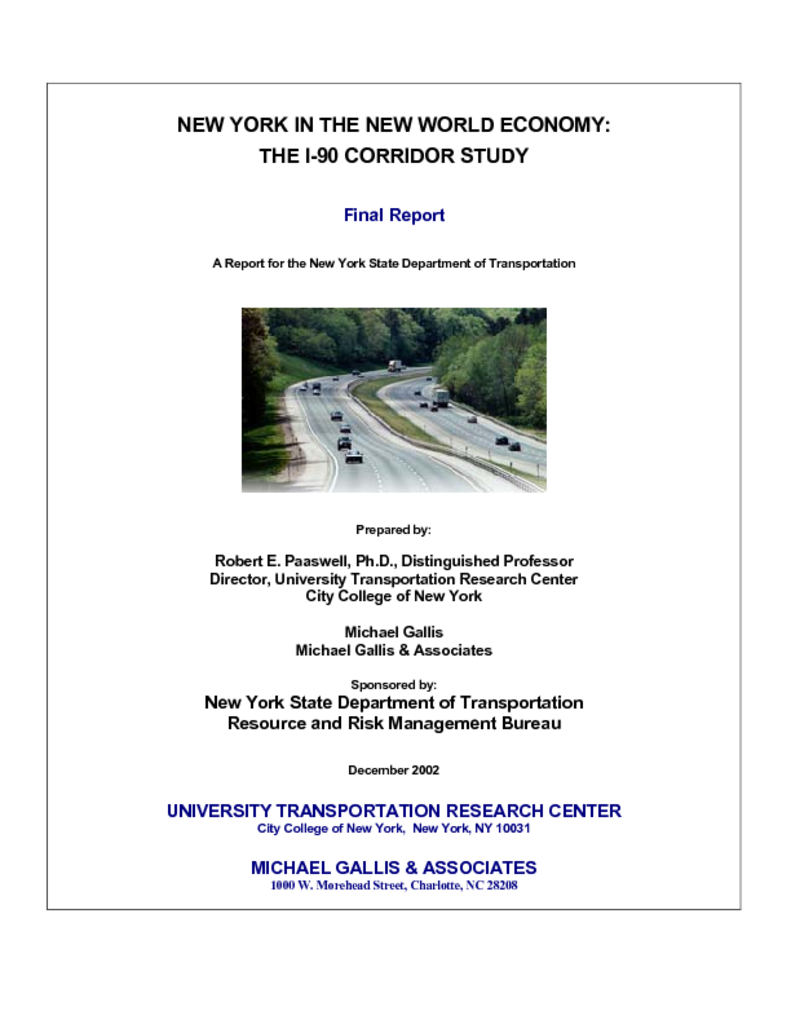16. Abstract The I-90 Corridor in upstate New York is a classic example of the de-industrialization of the Northeastern United States. With few exceptions, all counties along the corridor have experienced marked declined in manufacturing employment over the past three decades. While the service and FIRE have helped to absorb some of this decline in employment, the loss of manufacturing represents a decline in the economic “base” of the I-90 corridor. The types of products and jobs created by manufacturing employment are those that are by-and-large important to successful competition in the new global economy. Part of the solution to this economic malaise and the return of upstate New York to competitiveness involves establishing better links between upstate regions and the global flows of goods and services (e.g., the NAFTA corridor). At the same time, high quality linkages must be established between the various economic centers of activity in the I-90 corridor. These linkages must simultaneously serve the needs of logistics firms and the needs of commuters. That is, the growth of local economic conditions must occur at the same time and increased ability to compete on the global scale. Transportation infrastructure is a crucial component of these linkages.




